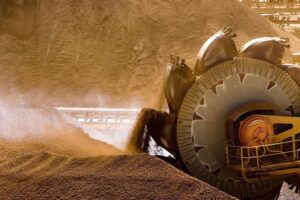
Mining enterprises of Ukraine in January-September of the current year reduced the export of iron ore raw materials (IORM) in physical terms by 35.3% compared to the same period last year – up to 21 million 366.874 thousand tons.
According to statistics published by the State Customs Service (STS), for the specified period, foreign exchange earnings from the export of iron ore decreased by 55.2% – to $ 2 billion 666.161 million.
Iron ore was exported mainly to Slovakia (19.45% of supplies in monetary terms), Poland (16.99%) and the Czech Republic (16.03%).
During the specified period, iron ore was imported to Ukraine for $27 thousand in a total volume of 49 tons, while in January-September 2021 – for $158 thousand in a total volume of 1.175 thousand tons. Import was carried out from Norway (44.44%), Great Britain (40.74%) and Italy (11.11%).
As reported, Ukraine in 2021 reduced the export of iron ore raw materials (IORM) in physical terms by 4.2% compared to 2020 – up to 44 million 357.727 thousand tons, but increased revenue by 62.8% – up to $6 billion 899.816 million The export of iron ore was carried out mainly to China (41.90% of supplies in monetary terms), the Czech Republic (9.65%) and Poland (7.99%).
Last year, IORM was imported to Ukraine for $184 thousand in a total volume of 1.202 thousand tons, while in 2020 123 tons of iron ore for $75 thousand were imported. Imports for 2021 were carried out from Egypt (55.98%), the Netherlands ( 21.2%) and Poland (7.07%).
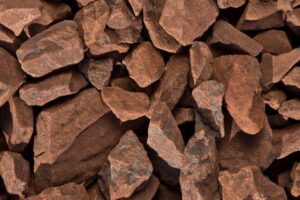
Mining enterprises of Ukraine in January-August of this year reduced the export of iron ore raw materials (IORM) in kind by 32.8% compared to the same period last year, to 20 million 10.602 thousand tons.
According to statistics published by the State Customs Service (STS), for the specified period, foreign exchange earnings from the export of iron ore decreased by 53.8% – to $ 2 billion 529.275 million.
Iron ore was exported mainly to Slovakia (19.82% of deliveries in monetary terms), Poland (16.49%) and the Czech Republic (15.95%).
During the reporting period, IORM was imported to Ukraine for $26 thousand in a total volume of 47 tons, while in January-August 2021, iron ore for $158 thousand was imported in a total volume of 1.175 thousand tons. Imports for January-August 2022 were carried out from Norway (46.15%), Great Britain (42.31%) and Italy (7.69%).
As reported, Ukraine in 2021 reduced the export of iron ore raw materials (IORM) in physical terms by 4.2% compared to 2020 – up to 44 million 357.727 thousand tons, but increased revenue by 62.8% – up to $6 billion 899.816 million The export of iron ore was carried out mainly to China (41.90% of supplies in monetary terms), the Czech Republic (9.65%) and Poland (7.99%).
Last year, IORM was imported to Ukraine for $184 thousand in a total volume of 1.202 thousand tons, while in 2020 123 tons of iron ore for $75 thousand were imported. Imports for 2021 were carried out from Egypt (55.98%), the Netherlands ( 21.2%) and Poland (7.07%).
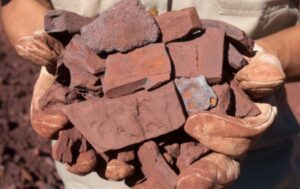
Mining enterprises of Ukraine in January-July this year reduced the export of iron ore raw materials (IORM) in physical terms by 28.8% compared to the same period last year – up to 18 million 571.940 thousand tons.
According to statistics released by the State Customs Service (STS), over the specified period, foreign exchange earnings from the export of iron ore decreased by 49.8% – to $ 2 billion 357.073 million.
Iron ore was exported mainly to Slovakia (19.80% of deliveries in monetary terms), China (16.07%) and Poland (15.6%).
During the reporting period, IORM was imported to Ukraine for $14 thousand in a total volume of 25 tons, while in January-July 2021, iron ore for $130 thousand was imported in a total volume of 1,134 thousand tons. Imports for January-July 2022 were carried out from Britain (78.57%), Italy (14.29%) and the Russian Federation (7.14%).
As reported, Ukraine in 2021 reduced the export of iron ore raw materials (IORM) in physical terms by 4.2% compared to 2020 – up to 44 million 357.727 thousand tons, but increased revenue by 62.8% – up to $6 billion 899.816 million The export of iron ore was carried out mainly to China (41.90% of supplies in monetary terms), the Czech Republic (9.65%) and Poland (7.99%).
Last year, IORM was imported to Ukraine for $184 thousand in a total volume of 1.202 thousand tons, while in 2020 123 tons of iron ore for $75 thousand were imported. Imports for 2021 were carried out from Egypt (55.98%), the Netherlands ( 21.2%) and Poland (7.07%).

Mining enterprises of Ukraine in January-July this year reduced the export of iron ore raw materials (IORM) in physical terms by 28.8% compared to the same period last year – up to 18 million 571.940 thousand tons.
According to statistics released by the State Customs Service (STS), over the specified period, foreign exchange earnings from the export of iron ore decreased by 49.8% – to $ 2 billion 357.073 million.
Iron ore was exported mainly to Slovakia (19.80% of deliveries in monetary terms), China (16.07%) and Poland (15.6%).
During the reporting period, IORM was imported to Ukraine for $14 thousand in a total volume of 25 tons, while in January-July 2021, iron ore for $130 thousand was imported in a total volume of 1,134 thousand tons. Imports for January-July 2022 were carried out from Britain (78.57%), Italy (14.29%) and the Russian Federation (7.14%).
As reported, Ukraine in 2021 reduced the export of iron ore raw materials (IORM) in physical terms by 4.2% compared to 2020 – up to 44 million 357.727 thousand tons, but increased revenue by 62.8% – up to $6 billion 899.816 million The export of iron ore was carried out mainly to China (41.90% of supplies in monetary terms), the Czech Republic (9.65%) and Poland (7.99%).
Last year, IORM was imported to Ukraine for $184 thousand in a total volume of 1.202 thousand tons, while in 2020 123 tons of iron ore for $75 thousand were imported. Imports for 2021 were carried out from Egypt (55.98%), the Netherlands ( 21.2%) and Poland (7.07%).
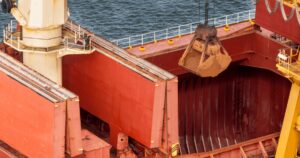
Ukraine reduced iron ore exports 24.2% year-on-year in H1 2022 to 17.011 million tonnes, the State Customs Service said.
The imports fell 44.8% in value to $2.159 billion.
Most of the exports were to Slovakia – 18.68% in value, followed by China – 17.55% and Poland – 14.65%.
Ukraine imported 13 tonnes of iron ore commodities for $24,000 in H1 2022, compared with 1,133 tonnes for $129,000 in H1 2021. Most of the imports in H1 2022 came from the UK – 84.62%, followed by Russia and Italy at 7.69% each.
Iron ore exports fell 4.2% in 2021 to 44.358 million tonnes but rose 62.8% in value to $6.9 billion. Most of the exports went to China – 41.90% in value, the Czech Republic- 9.65% and Poland – 7.99%.
Ukraine imported 1,202 tonnes of iron ore in 2021 for $184,000 and 123,000 tonnes in 2020 for $75,000. Last year’s imports came from Egypt – 55.98%, the Netherlands – 21.2% and Poland – 7.07%.
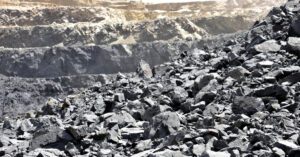
Ukrainian mining enterprises reduced the export of iron ore raw materials in quantity terms by 4.2% in 2021 compared to 2020, to 44.358 million tonnes.
According to updated statistics released by the State Customs Service on Friday, over the specified period, foreign exchange earnings from the export of iron ore increased by 62.8%, to $6.900 billion.
Iron ore was exported mainly to China (41.90% of supplies in monetary terms), the Czech Republic (9.65%) and Poland (7.99%).
Last year, iron ore raw materials were imported to Ukraine for $184,000 in a total volume of 1,202 tonnes, while in 2020 some 123 tonnes of iron ore were imported for $75,000.
Imports for 2021 were from Egypt (55.98%), the Netherlands (21.2%) and Poland (7.07%).